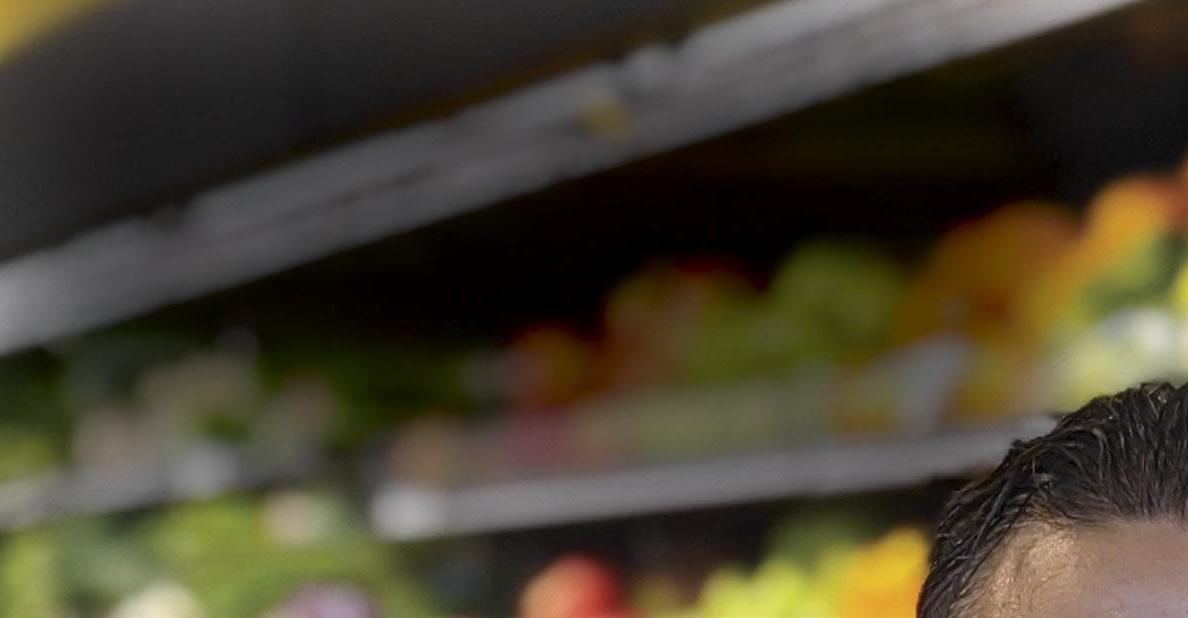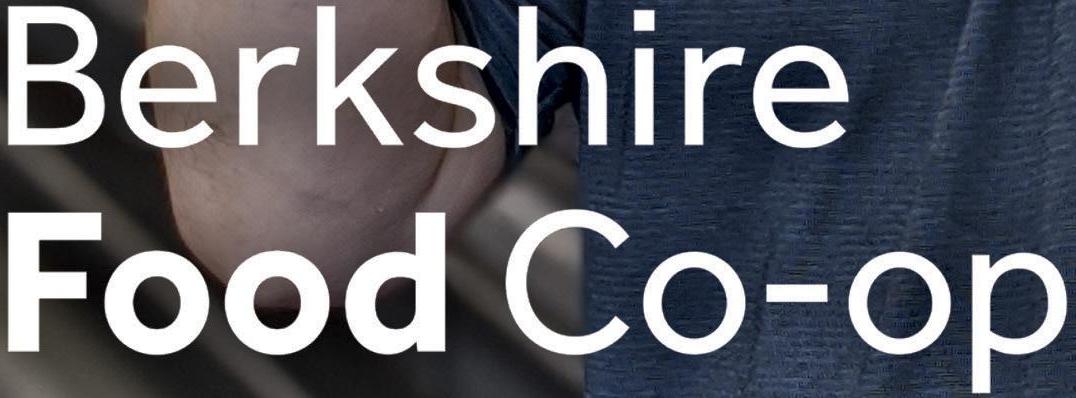
13 minute read
Food & Drink
by Chronogram
A POUGHKEEPSIE ALE HEADS TO CHINA Plan Bee’s Resilient Barn Beers By Raphael Beretta
On the ground floor of a quaint 1830s barn amidst 25 acres of farmland in Poughkeepsie, the taproom of Plan Bee Farm Brewery sat dark from mid-March until early June, when the Mid-Hudson Valley entered Phase 2 of the four-part reopening process, heralding a return to outdoor dining and drinking.
Advertisement
“We’re lucky that our business model was always to be small, to never grow past producing 500 barrels a year,” says Emily Watson, who coowns Plan Bee with her husband Evan, formerly of Captain Lawrence Brewing Co. According to a survey conducted by the New York State Brewers Association (NYSBA) in April, the Plan Bee’s 10-barrel operation size represents the majority of this region’s breweries. “Out of the 75 to 90 breweries located in the Hudson Valley, about 15 are big, 20 are midsize, and the rest are small taprooms and farm breweries,” says Hutch Kugeman, Hudson Valley representative for the NYSBA. For comparison, a large operation like Sloop Brewing Co. in Fishkill houses a dozen 120-barrel tanks.
Bottle Shop Culture
In many ways, Plan Bee’s business model was exceptionally well-suited to enduring the pandemic. The brewery, which specializes in wild ales, sours, and farmhouse ales, has been bottling since its launch in 2013. The distinctive qualities of these styles are flavor-boosted with fresh produce and herbs grown on Plan Bee’s own farm.
At the start of the pandemic, the Watsons began bottling everything they had available. Due to diminished taproom activity and declining carry-out sales amidst social-distancing measures, they decided to cease brewing in late March and focus entirely on getting the beer they had already produced to their fans far and wide. Their typical brewing cycle is at least eight weeks long, so the last batch wasn’t bottled until April 24.
After a two-month hiatus, they started brewing again in early June. It took time to relaunch because, like a sourdough starter, the yeast culture used in Plan Bee beer requires a continuous cycle of fermentation to stay active. “We had to restart from scratch,” Watson says. “If we don’t have beer continuously fermenting so that we can take yeast that’s alive and active to use again in the next beer, the yeast culture dies.”
The ‘’wild’’ part of wild ales refers to the native, naturally occurring mixed culture that the Watsons cultivate from their own raw honey. The fermentation process actually continues after bottling: residual sugars combined with yeast allow for carbonation to occur right in the bottle, a process known as bottle conditioning.
Thanks to good planning, when Plan Bee reopened for onsite tastings the second week of June, the Watsons were able to pour a slew of aged farmhouse and wild ales, some of which have been aging for three years. One such vintage, Beekeeper, was aged in oak. Comb 2019, the most recent addition to Plan Bee’s barrel blend series, spent time in both red and white wine barrels. The bright-orange Fuggle draws inspiration from Belgian saisons and British barleywines. Pepper features the fiery zing of ghost peppers, thai chilis, habaneros, and over a dozen other hot peppers grown on the farm.
Much of the produce for the beers is grown
onsite, from strawberries, apples, herbs, and edible flowers to the raw honey from the hives that give Plan Bee its name. “The year we did a ‘Bloody Mary’ beer, we grew all the tomatoes, the celery, the horseradish. What we grow is on a rotation,” says Watson, who brought years of farming experience in Ohio to the fertile Hudson Valley.
Certified farm breweries like Plan Bee not only create a rich local product, but they also bolster an entire New York State supply chain. The flagship Barn Beer is a shining example of Plan Bee’s dedication to New York sourcing. Stone House Grain in Hudson contributes the red wheat and six-row barley grown using regenerative practices. Poughquag’s Crooked Creek provides Perle hops andChimney Bluffs Hoppery from Walcott adds Chinook hops. The barley is malted at Hudson Valley Malt in nearby Germantown. And the whole concoction is fermented in oak with a house-mixed culture made from raw honey and honeycomb harvested right on the farm. Barn Beer Wild Ale is a New York product, start to finish.
Sipping these complex and funky ales in the company of goats and chickens is a recent luxury. At the height of the pandemic, online orders for pickup were instituted. They even had a “drive-through” event for beer takeout with a lobster-roll food truck in mid-March. Cars lined up alongside numbered barrels all over the property, awaiting their meals. The Cousin Maine Lobster food truck returned to Plan Bee on June 28, and similar events featuring Embers and Valia’s wood fire pizzas are sprinkled throughout the summer. Check their website for the schedule.
Wild Resilience: Reaching International Markets
Along with opportunities for expanded local sales, new doors for distribution opened during the pandemic. “We actually started exporting our beer internationally to China, Japan, and Korea,” Watson says. “As things are opening up again in China, people are going back to restaurants and bars, and there is a serious lack of beer available.”
With a population of over 1.4 billion, it should come as no surprise that China’s beer market has become the largest in the world. According to research from the EU SME Centre, Chinese beer consumption is twice that of the US and five times more than Germany, the largest market in the EU.
For the past few decades, most of this consumption has consisted of predominantly light beers, like lagers. Popular name brands like Tsingtao dominated, being cheaper than bottled water in most cities. However, tastes are changing. Craft beer has surged in recent years: since 2016, craft imports have increased by two-thirds, according to Mersol and Lou, a Chinese business advisory.
Craft brewpubs and microbreweries have emerged around even lower-tier cities in China over the last five years. As part of COVID-19 precautions, these operations were shut down for months, causing a craft beer shortage—and a new market for American brewers.
But not all brewers could seize this opportunity. Air freight is prohibitively expensive, and many beer styles cannot survive the long journey to China and other east Asian countries by cargo ship. Hoppy beers have to be flown and refrigerated to keep fresh. But thanks to its active, ongoing fermentation, Plan Bee’s particular style of wild ale can survive at room temperature for far, far longer than the three or four weeks it takes for a boat to get to China. “We’ve had beers that have been left in the bottle for six years, and they still taste delicious. I would say you could drink [our beers] anywhere up to 20 years,” Watson says.
The extreme resiliency characteristic of Barn Beer and other Plan Bee staples comes from their high acidity. Bad bacteria cannot grow in low pH conditions. Hops—due to their alpha acids—do act as a preservative; however, the movement in the industry toward lighter, citrusy ales (like the New England style of IPA) mean hoppier beers quickly lose their desired tasting notes and can instead develop a bitter, butterscotch quality due to oxidation. “To make it worthwhile to ship beer internationally, [the exporter] needs to send around 22 pallets. He works with many different [brewers] to make it work, and I happen to be one of them,” Watson says. Another farm brewery from Connecticut sent a few of their offerings right next to Plan Bee’s on the eastern voyage.
International distribution for Plan Bee started in Canada, through an importer that bought in bulk and sold beer to individual clients. For countries like Denmark and Australia, Plan Bee is selling to standard distribution companies. And thus, one pallet at a time, a 10-barrel farm brewery in Poughkeepsie is reaching several continents.
PUTTING THE FARM IN FARM BREWERY
While the term “farm brewery” conjures bucolic images of picnic tables amidst chicken yards, hop yards, and barns, with a backdrop of rolling hills, the actual New York State term denotes a license type that requires brewers to use a certain percentage of New York State-grown ingredients. But back to that pastoral vision, we’ve rounded up seven farm breweries in the Hudson Valley that are located on working farms, and use produce grown onsite, from hot peppers to plums to rye, in their beers.
Arrowood Farm Brewery
236 Lower Whitfield Road, Accord Arrowoodfarms.com Located on 48 pastoral acres in Accord, Arrowood collaborates with neighboring farms to source fruit, grain, and botanicals from within 100 miles. At the farm, laze in a hammock while you sip a beer or play a round of cornhole. If you’re lucky you’ll catch a glimpse of the sheep wandering through the hopyard.
Gardiner Brewing Company
699 NY-208, Gardiner Gardinerbrewingcompany.com Located on Wright’s Family Farm, Gardiner Brewing Company opened its doors in fall 2018. Set on 453 acres, the fifth-generation family farm produces apples, stone fruit, and berries, many of which make their way into the brewery’s seasonal beers. Sit on the flagstone patio and take in the sunset over the Shawangunk Ridge, and stay late for live music.
West Kill Brewing
2173 Spruceton Road, West Kill Westkillbrewing.com Located on a historic dairy farm in the Catskills, West Kill Brewing uses hyper-locally grown and foraged ingredients and crystal-clear mountain spring water to make beers that capture the terroir. Sit outside by the fire pit and enjoy views of the Catskills with your beer before you head to the nearby Spruceton Road trailhead for a hike.
From the Ground Brewery
245 Guski Road, Red Hook Fromthegroundbrewery.com Two-year-old From the Ground Brewery, on Migliorelli Farm outside the Village of Red Hook, grows much of the barley for its beer onsite and sources all its hops from New York State. Stroll the scenic property with its pond and rolling hills, before buying a selection of their three year-round beers or limited-edition bottles with their pastoral watercolor logos.
Obercreek Brewing Company
59 Marlorville Road, Wappingers Falls Obercreekbrewing.com With 14 acres, you’ll have plenty of space to spread out at this organiccertified produce and herb farm. Three-year-old Obercreek Brewing uses ingredients from its own farm and other New York State producers to create a wide range of IPAs, farmhouse ales, and other styles. They currently have four beers on tap.
Plan Bee Farm Brewery
115 Underhill Road, Poughkeepsie Planbeefarmbrewery.com This bucolic brewery, sited on a 25-acre working farm outside Poughkeepsie, specializes in barrel-aged and wild-fermented brews made with yeast cultivated from the beehives. The seasonal selections feature farm-fresh ingredients like the Nasturtium, a zingy ale with the distinctive peppery flavor of the namesake flower petals. Wander the property, order from the rotating food trucks, and spread out a blanket on the lawn.
Old Klaverack Brewery
150 Thielman Road, Hudson Oldklaverackbrewery.com Leave the beaten path and head to Old Klaverack in Hudson, which features a quarter-acre hop yard of climbing green, corn hole, live music, and picnic tables. This two-barrel nano brewery produces a range of small-batch beers, including a cream ale, a stout, IPAs, seasonal specialties, and limited releases.
Better Than the Bodega: Going Digital
Despite reaching an increased international market, domestic sales are still vital to the survival of small breweries, and online sales were a lifeline throughout lockdown. “I think that’s been incredibly important during all this to have strong social me- dia that you can engage with your customers and keep them interested. Those who didn’t have good social media, struggled a little more,” says Kugeman, who also runs the Art and Sci- ence of Brewing course at the CIA in Hyde Park.
One of the ways the Watsons have fostered loyalty is around their Hive membership program, which dates back to 2013. Similar to a CSA, members pay a set amount fee, like buying a share of the farm, and receive a portion of the “harvest” as a repayment for their investment—only in this case, the crop is beer. “You can’t legally buy shares of a brewery, so our mem- bers invest in us and in turn we ship them a box of whatever has come out of the taproom and been bottled,” Watson says.
Plan Bee has extended their reach digitally. To manage their Hive memberships and ship direct-to-customer within New York State, the Watsons enlisted the services of TapRm, a bodega-turned-pioneering online beer distributor.
“If you go to your favorite chocolate company’s website, the first thing you’ll see is ‘buy now for delivery,’” says Jason Sherman, founder and CEO of TapRm. “It’s funny, no brands or beer websites were really doing that.” And more importantly very few consumers were looking for it. According to a survey TapRm conducted in January 2020, 80 percent of consumers in New York thought it was illegal to purchase beer online, a “mind-blowing” statistic for Sherman.
But restrictions during the pandemic and fear of grocery stores forced consumers to take a new look at how they buy alcohol. Pre-lockdown, only .2 percent of all beer sales were made online. Online sales of wine and spirits were five times that amount, and groceries sales 20 times. Amidst the pandemic, the State Liquor Authority loosened the rules around shipping alcohol, which Sherman says was the “best thing possible for beer in the online space.”
TapRm lowered its free-shipping minimum to $25, eliminating a barrier to entry. “With COVID-19 happening, our model came to light: We are the largest e-commerce player in the US that’s doing direct shipping right now, and we’re the number one account in New York City,” Sherman says. “We’re buying more beer from other distributors and breweries than Madison Square Garden or Yankee Stadium [during peak season.]”
Since early April, TapRm has received requests for e-commerce assistance from about 30 new brands a day. Luckily for Plan Bee, they beat the rush, partnering with TapRm for their Hive memberships a year ago. “I just drove a bunch of beer down to Brooklyn for them to ship all over the state,” Watson says. The Poughkeepsie farm brewery also has worked with Washington-based distributor Tavour for three years, which ships direct to consumers in about 20 states from the West Coast to the Midwest.
Barn Beer and a few other releases sold out quickly on TapRm when first introduced. With business booming, every $50 of beer sold on TapRm puts $10 into a fund for those out of work in the brewing industry. Upon entering the game, other local producers have had great success shipping online. Taking advantage of relaxed liquor laws and finding new ways to serve customers under the conditions of an outdoor-only reopening has kept many local producers alive.
“I’d be surprised if you walk through downtown Poughkeepsie or Beacon and don’t see that some businesses remain closed, and that may include some breweries,” Kugeman says. “However, I can tell you for sure breweries that were not shipping a month ago are now. People are adjusting as they go and learning what works. I haven’t heard from any [brewer] that they’re about to close. I’m actually not aware of a single place on the verge.” And with taprooms and restaurants reopening for service, business is sure to only grow.
ONE IN A MELON



(413) 528-9697 www.berkshire.coop downtown Great Barrington













